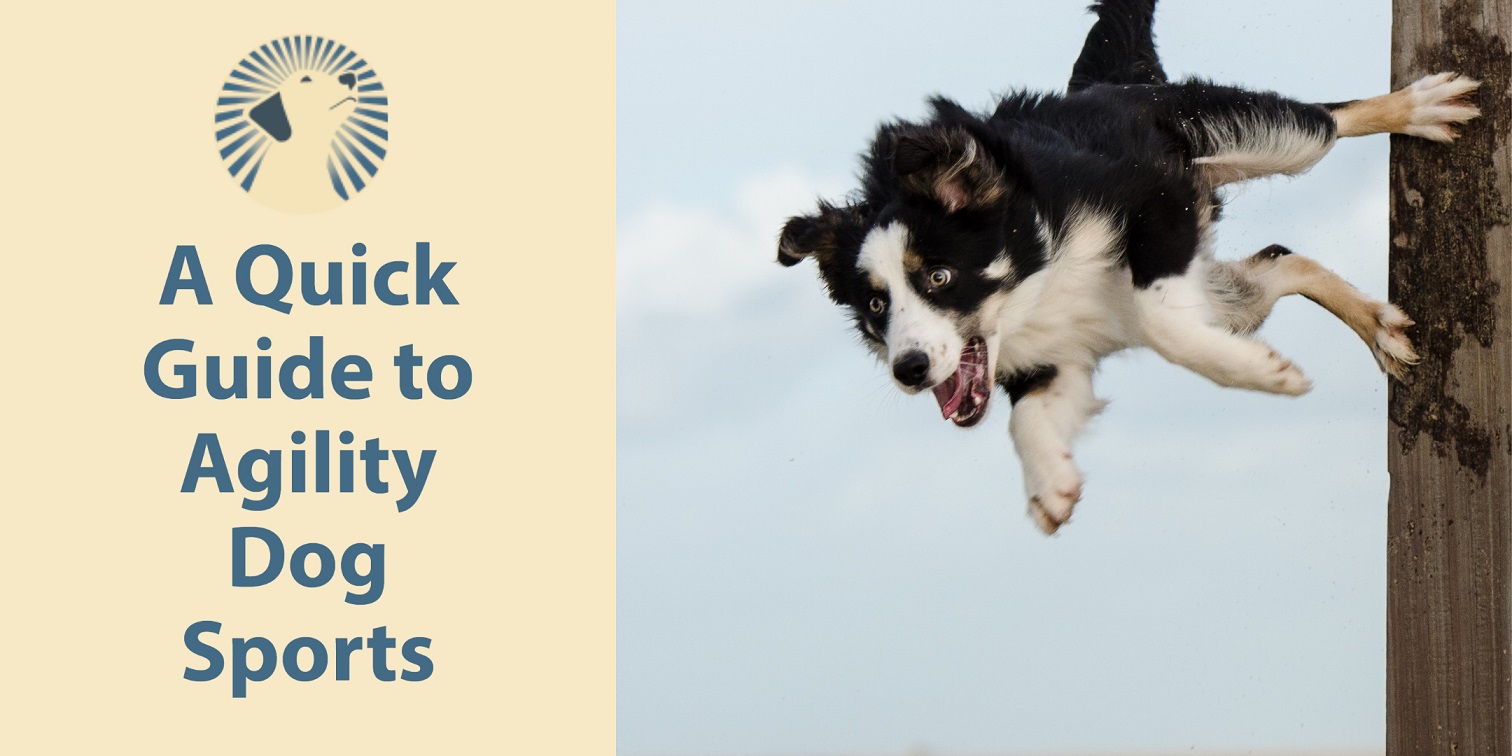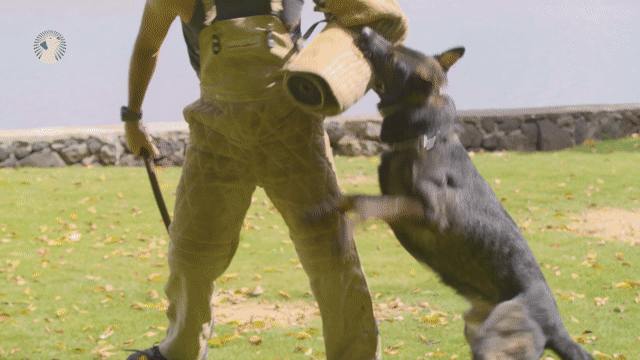
A Quick Guide to Agility Dog Sports
Dog agility sports include such endeavors as jumping, cross-country racing, and much more. There is something amazing about watching a talented dog work through an agility course - the excitement of the crowd, the intensity of the competitor, and that moment when you can see the dog's brain turning, thinking about how he will negotiate the next obstacle.
Great agility demands so much from a dog - athletic ability, endurance, speed, and dexterity. But it also asks for something else: partnership. There's no doubt that this is a sport where humans and canines must work as a team to succeed. If your goal is to compete in agility sports with your beloved pet, there are some important things you need to know about the sport, and how you can get started.
What Is Dog Agility?
A common definition of agility describes it as, "the ability to change the position of the body quickly and accurately in relation to its surroundings." That's not specific to dog agility - it applies to any athlete or human who must negotiate a specific course or obstacle successfully.
But in the case of dog agility, there are some special requirements. The course that the dog must follow is laid out with obstacles. Each obstacle has its own set of rules and regulations. As you might expect, such activities require much more than just physical ability; they also demand an understanding of the sport. The next section takes a look at how to find information about this increasingly popular canine sport.
Getting Started in Dog Agility Training
The sport of agility has been growing rapidly over the last several years, and today is recognized as a legitimate dog sport all around the world. It's so popular, in fact, that several federations and organizations have been formed as governing bodies:
- Agility Association of Canada (AAC)
- American Kennel Club (AKC)
- American Mixed Breed Obedience Registration (AMBOR)
- Canadian Kennel Club (CKC)
- Canine Performance Events (CPE)
- Dogs on Course in North America (DOCNA)
- International Federation of Cynological Sports
- Just For Fun (JFF)
- North American Dog Racing Association (NADRA)
- Teacup Dogs Agility Association (TDAA)
- The Cynosport Dog Agility World Games
- The United States Dog Agility Association
- The North American Dog Agility Council
- United Kennel Club (UKC)
Each of these organizations and federations has its own rules and regulations about the sport, but the biggest challenge remains to find out which organization is best for you and your dog. The most important thing to remember is that the rules and regulations are designed to keep your dog safe, so you must abide by them!
The next section of this article provides a quick overview of some basic things about agility. It's not meant to be an in-depth look at the sport; it's just a helpful guide for people who want to get started, but don't know where to begin.
The Basics of Dog Agility Courses
The agility course is laid out with a variety of obstacles that the dog must negotiate. These are usually marked by equipment, such as cones or hoops. The dog must run between these marks at all times, except when instructed to do otherwise. Agility courses are usually laid out along straight lines, but there may be some curves involved in certain parts of the course.
There are several basic types of obstacles that you'll find on an agility course:
- Contact obstacles - dog jumps up on a platform so it can cross some obstacle, such as a see-saw, or balance beam.
- Direct contact obstacles - the dog runs over some obstacle directly with its feet, such as a bridge.
- Indirect contact obstacles - the dog must go under some obstacle, such as a tunnel or bar jump.
- Tunnels (except for chute tunnels) are set up by having the entrance on one side of the course, and the exit on another side; there is usually an 'S' curve within the tunnel to make it more difficult for the dog.
- Chute tunnels are made of two long pieces of fabric, which are attached to equipment at both ends; these are pulled around by an operator as the dog runs through them. This type of tunnel is usually used on courses that run through small enclosures.
- Tabletops are elevated platforms that the dog runs across to get from one obstacle to another.
- Teeter-totters, or seesaws, are straight pieces of equipment with a large platform at either end; these have a pivot point in the middle so they can move up and down in a controlled manner. The dog must go over this piece of equipment to continue on with the course.
- Dog walks are low, narrow structures that the dog must climb over at a trot or jog pace; these are usually set up as an indirect obstacle, so they are placed between other obstacles along the course.
- Jumps are elevated openings over which dogs will jump in order to get from one point to another. There are several types of jumps used in agility, but the most common is the hurdle jump - these are placed so that they slope away from the dog at one end, and towards the dog on the other.
Getting Started in Agility with Your Dog
There is no one right way to get started in agility with your dog, but you should begin with some basic information. First of all, you should have a good understanding of your dog's abilities and training history. How well does it respond to verbal commands? Does it obey your commands when distracted by something else? Is it afraid of loud noises or strange objects?
The next step is to find an agility club that offers agility classes. Some clubs will allow you to start classes while others require some dog training experience, so find out this information before you sign up for any classes. Classes are offered in most large cities, so look online or ask around your neighborhood to see what's available near you.
You can also get started by talking to other local agility trainers, or instructors. Most offer private lessons, which is a great way to familiarize yourself with the sport and your dog's abilities. Also, consider watching other handlers and their dogs as they perform at agility events; this will give you an idea of what skills to look for in a good competitor.
Dog Agility Training Safety
It is important that you check your dog's health before any type of performance training begins; ask your veterinarian to make sure it is ready for any type of physical activity. It is important to also take your dog's age into consideration and plan and train accordingly. Other safety measures to be aware of include:
- Check the obstacle course equipment before beginning any training session to make sure it's in good working order.
- Use the equipment properly - if jump bars are too high, for example, this can be extremely uncomfortable or even dangerous to your dog.
- Be sure that only one dog is on the training course at a time. In this way, you can avoid accidental collisions and make sure your dog's energy is focused on what you are teaching it.
- Keep training times short and allow for breaks in between sessions; if you are training with a group, always have someone in charge of the course that can call for help if it's needed.
- If your dog is still very young, do not allow them to jump from a full height.
- Do not train on hard surfaces, especially if your dog has joint problems or other physical limitations. Even healthy dogs can develop problems from running and jumping on hard surfaces, so this is an important rule to remember.
- If your dog is too young for competition training, do not push them or put them under any type of pressure; you are more likely to create health problems if you do.
- Just like when you exercise, it is important to do warm-up and cool-down exercises before you begin your agility training session. Stretch the muscles in your dog's body before beginning any jumping or obstacle course work, and do gentle relaxation exercises at the end of each session.
- Give your dog days in between sessions to rest and recuperate.
- Get professional help if you suspect that your dog has any type of injury or illness that prevents it from training properly.
- Finally, be sure that your dog is not getting dehydrated or overheated while you are training. Agility training can be extremely strenuous on both handlers and their dogs, so it is important to pace the session accordingly.
Keep an Eye Out for Signs of Injury
Some agility training sessions can be very strenuous, especially if your dog is new to the sport. Watch for signs of fatigue or lethargy during training; if you notice these signs, take a break and assess your dog's condition before continuing. Here are a few other signs to watch for:
- Tight muscles; especially in the legs and shoulders.
- If your dog is not properly warmed up before training, watch for muscle cramps and spasms; these can be a sign that your dog's muscles are too tight or too cold.
- Limping; if you notice this after an agility training session, take your dog to a veterinarian to assess any possible injuries.
- Excessive panting - this can indicate that your dog is overheated.
- Anxieties - if you notice any unusual behavior in your dog during training sessions, take a break and try to figure out what might be causing it. Remember, dogs are not being difficult on purpose, they are only attempting to communicate that they are uncomfortable about something occurring during agility training.
- Check for foreign objects on the course that could get lodged in your dog's paws.
- Keep your dog well-groomed to avoid any type of discomfort or injury.
Dog agility training should be fun for everyone involved - both you and your pet can enjoy the benefits of running an obstacle course. Remember to always be patient and take your dog's health and safety into consideration as you work together to train for agility competitions.
Useful Ressources

Sport and Personal Protection Dogs
Dog training is not always easy, however, Daniel's methods are amazing and he makes it seem simple. The techniques work wonders on both you and your dog! What high level precision training looks like in certain breeds made for Sport and Protection training.

Comprehensive Guide to Sporting Dogs
If you're a sports lover, the perfect pooch companion for you may be a breed that is bred for sports. Sporting dogs are bred to be energetic, so they'll keep up with whatever routine you set for them.

The Best Dog Breeds for Agility Sports
Dog agility sports are a great way to engage with your dog, have fun and work on teamwork, mental stimulation, and physical exercise. But does a dog's breed affect his ability to participate in agility sports?